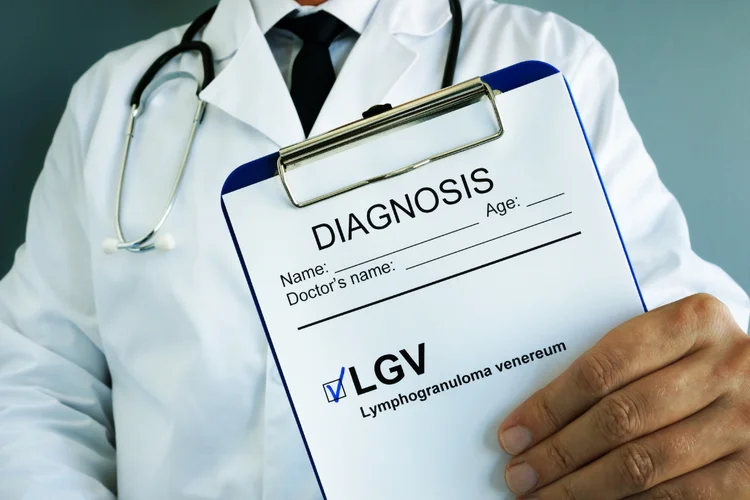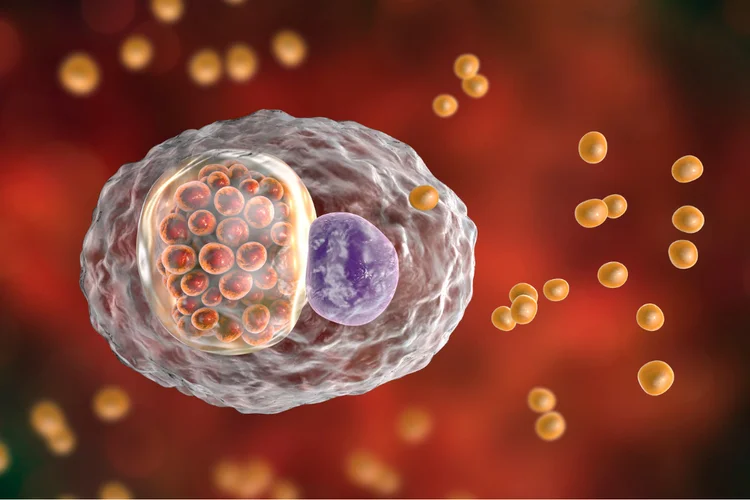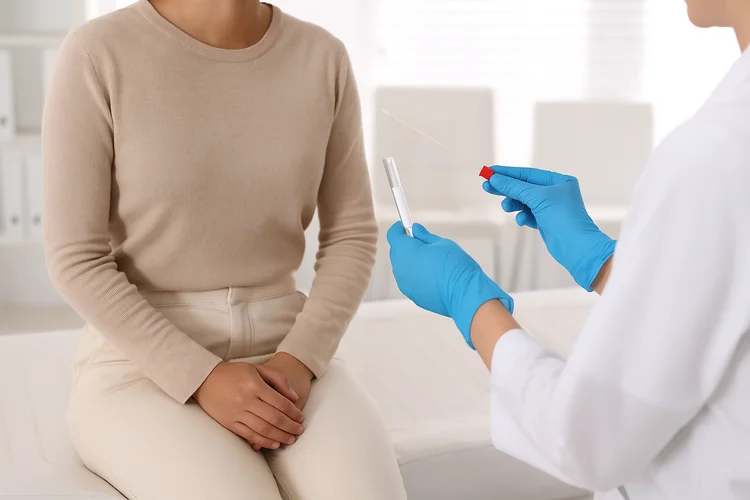Lymphogranuloma Venereum (LGV): Symptoms & Treatment
Last updated: Nov 18, 2025
| Test Options | STD Screening Packages |
| Treatment | Oral antibiotics |
| Price |
|
| Appointment Options |
Same-day appointment (subject to availability). Book via WhatsApp: 8877 0326 or email: hi@atamed.sg |
| Clinic Locations |
Orchard: 1 Orchard Blvd
#05-09 Camden Medical Centre, S248649 Tanjong Pagar: 72 Anson Rd #01-02 Anson House, S079911 |
What Is Lymphogranuloma Venereum (LGV)?
Lymphogranuloma venereum (LGV) is a sexually
transmitted infection (STI) caused by specific strains of the bacterium Chlamydia trachomatis.
Unlike the strains responsible for common chlamydia infections, those associated with LGV
often cause more severe symptoms.
The infection typically affects the genital area, rectum, or nearby lymph nodes, and is more
frequently diagnosed in men, particularly those living with HIV. If left untreated, LGV can
lead to chronic inflammation, tissue damage, and long-term complications involving
the genital and rectal regions.

What Causes Lymphogranuloma Venereum (LGV)?
LGV is caused by the L1, L2, or L3 strains of Chlamydia trachomatis, which are
transmitted through direct contact with infected bodily fluids during sexual
activity.
Transmission typically
occurs through:
- Vaginal, anal, or oral sex with an infected partner.
- Small tears or breaks in the skin or mucous membranes.
- Sharing sexual devices that are not properly cleaned or used without barrier protection.
Unlike more common forms of chlamydia, LGV strains are more invasive and tend to affect deeper tissues, including the lymphatic system.

Lymphogranuloma Venereum (LGV) Symptoms
LGV symptoms can vary depending on the stage of infection and the site of exposure.
The incubation period, which refers to the time between exposure and the onset of symptoms,
typically ranges from 3 to 30 days.
The condition usually progresses through 3
distinct stages:
| Stage of LGV | Symptoms |
|---|---|
| Primary stage |
|
| Secondary stage |
|
| Tertiary stage (late complications) |
|
In advanced or untreated cases, these complications can lead to permanent scarring of genital or rectal tissue.
How Is Lymphogranuloma Venereum (LGV) Diagnosed?
LGV is diagnosed through a combination of clinical assessment and laboratory
testing.
Confirmation typically involves one
or more of the following methods:
- Clinical examination and medical history review – Assessment of symptoms, sexual practices, and risk factors to guide further testing.
- Nucleic acid amplification tests (NAATs) – Detect Chlamydia trachomatis in urine, rectal, or genital swabs.
- Genotyping or molecular tests – If Chlamydia trachomatis is detected, further testing using specialised methods that analyse the bacteria’s genetic material can identify whether the infection is caused by LGV-specific strains (L1 to L3).
- Serological tests – Blood tests used to detect antibodies, but they are less specific and are generally reserved for settings where more precise testing is unavailable.

Lymphogranuloma Venereum (LGV) Treatment
LGV is a curable infection
that is commonly treated with a course of antibiotics that target Chlamydia
trachomatis, such as doxycycline.
Alternative antibiotics may be considered in certain situations, such as during pregnancy or when
doxycycline is not suitable. It is important to complete the entire course of treatment, even if
symptoms resolve early, to ensure the infection is fully cleared.
Follow-up testing and clinical evaluation are often advised to confirm that the infection has been
successfully treated.
Lymphogranuloma Venereum (LGV) Testing & Treatment Cost
At ATA Medical, we provide discreet and confidential testing for LGV and other STIs, along with treatment when required. Our prices are as follows:
| Test / Treatment | Test Type | Price* |
|---|---|---|
| Consultation | From $49.05 | |
|
Genital Ulcer PCR Testing (7 tests) Herpes Simplex Virus 1 and 2, Haemophilus Ducreyi (Chancroid), Cytomegalovirus, Lymphogranuloma, Venereum, Treponema Pallidum (Syphilis), Varicella Zoster Virus |
Swab | $318 |
|
Enhanced Genital Ulcer Testing (18 tests) HIV, Syphilis (swab + blood test), Hepatitis B, Hepatitis C, Chlamydia, Gonorrhoea, Mycoplasma genitalium, Mycoplasma hominis, Trichomonas, Ureaplasma parvum, Ureaplasma urealyticum, Herpes Simplex Virus 1 and 2, Haemophilus Ducreyi (Chancroid), Cytomegalovirus, Lymphogranuloma, Venereum, Treponema Pallidum (Syphilis), Varicella Zoster Virus |
Blood + Swab | $538 |
| Oral Antibiotics | From $1.09 per tab | |
We offer comprehensive screening
packages that cover a range of STIs and other sexual health concerns. You may request to see
a male or female doctor based on your preference.
To learn more or to book an appointment, please contact us.
How Can You Prevent Lymphogranuloma Venereum (LGV)?
You can reduce your risk of LGV by practising safer sex and undergoing regular STI screening. Commonly recommended prevention strategies include:
- Using condoms consistently and correctly during vaginal, anal, and oral sex.
- Avoiding the sharing of sexual devices, or ensuring they are thoroughly cleaned and used with barrier protection.
- Getting tested regularly if you are sexually active, particularly if you have multiple partners or belong to a higher-risk group.
- Communicating openly with sexual partners about STI status and testing history.
- Limiting the number of sexual partners and avoiding anonymous sexual encounters.
How Do I Book a Lymphogranuloma Venereum (LGV) Testing Appointment?
ATA Medical @ Orchard
Nearest MRT: Orchard Boulevard Station (TE13)
Contact Number: 6223 0682
Email: camden@atamed.sg
Opening Hours:
Mon - Fri: 8:30 AM to 12:30 PM, 1:30 PM to 5:30 PM
Sat: 8:30 AM to 12:30 PM
Sun & PH: Closed
ATA Medical @ Tanjong Pagar
Nearest MRT: Tanjong Pagar Station (EW15)
Contact Number: 6223 0682
Email: hi@atamed.sg
Opening Hours:
Mon - Fri: 8:30 AM to 12:30 PM, 1:30 PM to 5:30 PM
Sat: 8:30 AM to 12:30 PM
Sun & PH: Closed


